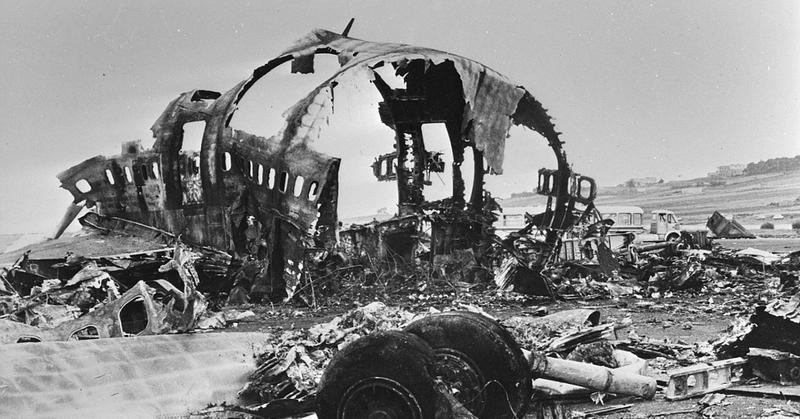1977: The Worst Accident In Civil Aviation History Where Two 747s Collided
By | March 25, 2021

On March 27, 1977, two Boeing 747 jumbo jets smashed into each other on the tarmac of Los Rodeos Airport in the Canary Islands, resulting in the horrific deaths of over 500 people. How could something like this happen? Who was responsible? And could it happen again?
A Bomb Of Fate
The Canary Islands are known for their beauty and beaches, but that doesn't mean this popular tourist destination is free of political strife. During the '70s, an organization called the Canary Island Independence Movement sought to end Spanish rule over the islands, and they were fine with using deadly force to accomplish this goal. At 1:15 P.M. on March 27, 1977, the C.I.I.M. detonated a bomb in the florist shop of the Gran Canaria Airport in Las Palmas, wounding eight people. Under suspicion that more bombs had been planted throughout the building, the airport was shut down and flights were redirected, mostly to the much smaller Los Rodeos Airport on the island of Tenerife.

Double Trouble
Two Boeing 747 jumbo jets, one from K.L.M. Royal Dutch Airlines and one from Panam Airlines, were diverted to Tenerife for a temporary refuge, but because the airport was not designed to handle so many planes, especially of their size, some of them had to park on the runway, where they sat for several hours. It would have just been an annoying delay if not for another unfortunate factor: the arrival of very thick, very sudden fog. While air traffic control did their best to monitor the locations of planes and help them find safe places to wait, many of the pilots could not see anything outside of their windows. Furthermore, the officers of the K.L.M. jet decided to use the time they had to refuel the plane instead of refueling at Gran Canaria as planned.
When Gran Canaria was finally allowed to reopen, K.L.M. Captain Veldhuyzen van Zanten was eager to bail, as he had another flight he was in danger of missing. Meanwhile, Panam Flight 1736, which was also on the foggy tarmac, had seemingly missed its turn to exit the runway. It's not clear if the unfamiliar airport or the fog was to blame for Captain Victor Grubbs missing the unmarked turnoff, but he was still trying to find a safe spot to park his plane when Van Zanten announced that he was ready for takeoff.

The Tenerife Airport Disaster
When Van Zanten began driving the plane forward, he was warned by his first officer that they hadn't officially been given clearance. He radioed air traffic control, who responded, "Okay, stand by for take off, I will call you," at which point Panam chimed in, "We're still taxiing down the runway." Tragically, Van Zanten heard nothing after the word "okay" because the two voices attempting to speak at the same time on the same frequency resulted in a type of screeching feedback called a heterodyne, so he proceeded. (Many airlines have since altered their equipment to solve the problem of heterodynes.)
No one in either plane saw each other until it was too late. Van Zanten tried to pull up so the already-lifting plane would simply fly over the parked Panam, but because of the added weight from the refueling, he missed his minuscule window and the lower engine of the K.L.M. hit the top right side of the Panam's fuselage. The K.L.M. Boeing only flew for around 150 meters before the damage to the engine caused it to stall, and within moments, the jumbo jet crashed into the tarmac and burst into a ball of nightmarish flames, instantly killing all 248 people on board.
Perhaps even more harrowing was the view from the Panam, whose captain had time to scream "That son of a b---- is coming!" before the crash. Luckily, 61 people escaped before the aircraft likewise exploded, but that still left 335 lives lost in a matter of minutes aboard the Panam. Survivor Jack Ridout referred to the tragedy as his "own private Vietnam," and many of the other passengers and crew reported long-lasting psychological trauma. The Tenerife airport disaster of March 27, 1977 is still the single deadliest accident in aviation history.

